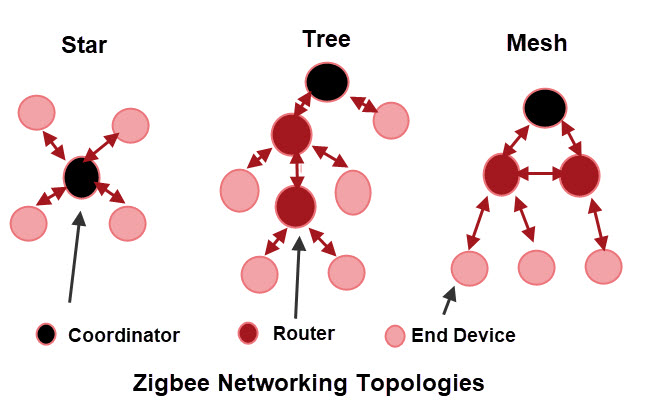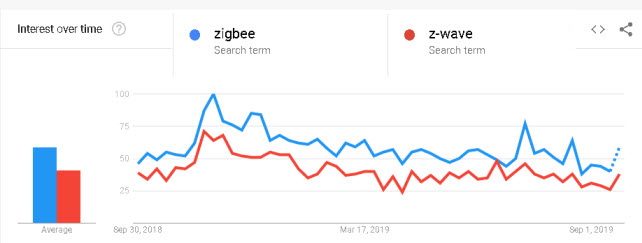Zigbee Network Basics- Notes and Resources
The Zigbee network protocol is a common protocol used on home and industrial networks.
Although it is designed to be easy to set up it is important that you have a basic understanding of how it works.
These are my personal notes on Zigbee that be be helpful if you are new to the protocol.
What is Zigbee? – Zigbee is a low power, low data rate (250kbps) wireless protocol used primarily for Home automation and industrial control, building automation,sensor data collection etc – Wiki
Zigbee devices have a range (1 hop) of 10 to 20m and to be certified must have a battery life of 2 years.
Mục Lục
Zigbee Network Topologies
Zigbee networks can be configured to operate in one of three topologies.
- Star
- Tree
- Mesh

Devices can be split into:
- Full Function Device (FFD)
- Reduced Function Device (RFD
Full Function Device (FFD)- Can communicates with all node types and can operate in one of three modes:
- PAN Coordinator: Sends beacon frames, provides routing information, manages short, network-specific addresses. Every network requires one
- Router.-Relay messages between nodes. Not required in simple networks.
- Normal End device.-Sends and receives messages. The only node type that can sleep.
There must be 1 coordinator on a Zigbee network.
Reduced Function Device (RFD): Can only talk to a single
FFD. These are end nodes. Example a smart lock,switch ect
Zigbee Network Addresses
All devices have a 64bit MAC address assigned by the manufacturer.
The MAC address is mapped to a unique 16 bit network address by the coordinator and assigned when the device joins the network. This is the Short address.
The coordinator has a network address of 0.
Zigbee also provides support for group addresses which allows message delivery to multiple nodes.
Device Binding
Zigbee also supports device binding were you can bind a device e.g a switch to another device e.g a bulb or to a group of devices.
Message Types
Zigbee supports three messaging types as per IP networks.
- Unicast– one to one
- Multicast -1 to a group
- Broadcast -1 to all
PAN Address
This is a 16 bit address assigned by the coordinator when the network is created. It is equivalent to the IP network address.
The PAN address must be unique.
Application Addresses
A Zigbee node can support up to 240 applications.
Each application is assigned an endpoint number in the range 1-240. This is similar to tcp/ip ports.
A broadcast endpoint of 255 is also available.
Encryption
Data can be encrypted at one of three levels:
- MAC
- Network
- Application
Encryption uses AES-128 and shared keys.
Example Zigbee Devices
- Philips Hue lighting and other device like motion sensors
- Amazon Echo dot Plus (Zigbee hub)
- Bosch Security Systems
Popularity ZigBee vs Z-Wave

Video
Resources:
Related Tutorials
Please Let me Know if you found it Useful
[Total:
2
Average:
5
]















![Toni Kroos là ai? [ sự thật về tiểu sử đầy đủ Toni Kroos ]](https://evbn.org/wp-content/uploads/New-Project-6635-1671934592.jpg)


